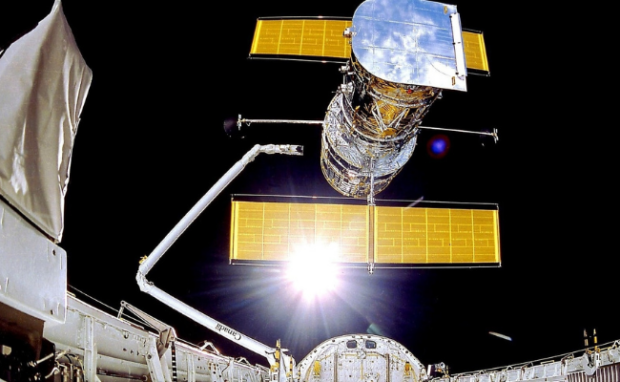China will launch first-ever ‘lobster eye’ telescope
China announced it would activate its special Einstein Probe telescope in January 2024. Unlike other interstellar scopes, it is a pair of two that resemble lobster eyes that will detect X-rays in outer space. Soon, the Probe could help the world learn more about gravitational waves, one of the fundamental forces in the universe.
We haven’t all there is in the vast expanse of space, so we have so much to explore and study. However, we’ve peered into heavenly bodies with regular telescopes, so we need specialized tools to gain more information. China’s lobster eyes could be the key to unlocking more secrets of outer space.
This article will discuss how the Einstein Probe will help us learn more about space. Later, I will discuss China’s other space research projects.
How does the lobster eye telescope work?
China plans to launch a new X-ray astronomical satellite, Einstein Probe (EP), at the end of this year, said Yuan Weimin, principal investigator of the satellite project https://t.co/SYJodvAp3A pic.twitter.com/uip01hQeI1
— China Xinhua News (@XHNews) March 18, 2023
The Chinese Academy of Sciences (CAS) collaborated with the European Space Agency (ESA) and the Max Planck Institute for Extraterrestrial Physics (MPE) to create the Einstein Probe. This binocular telescope has two next-generation instruments to observe large areas of the sky.
The first is a Wide-field X-ray Telescope (WXT) that makes the Probe a “lobster eye” telescope. It uses Micro Pore Optics technology to observe 3,600 square degrees in one shot.
That encompasses nearly a tenth of the celestial sphere, enabling the Einstein Probe to observe the entire night sky in three orbits around Earth. Each orbit takes 96 minutes.
The second next-gen equipment is the Follow-up X-ray Telescope (FXT). The WXT will look for new X-ray sources, then the FXT will target and study them.
The Einstein Probe will also alert other telescopes on Earth that operate in various wavelengths, such as radio waves and gamma rays. Consequently, these facilities could collect multi-wavelength, enabling the Probe to study a phenomenon more thoroughly.
The ESA explains the significance of the lobster eye telescope. Outer space has cosmic objects that emit X-rays, but they constantly brighten and dim.
You may also like: NASA discovers question mark in space
They briefly appear before disappearing for long periods or forever. However, X-ray light has fundamental information on some of the most mysterious outer space phenomena.
These include supernova explosions, neutron stars, matter falling into black holes, and hyper-dense stars. More importantly, the lobster eye telescope will help us learn more about one of the most fundamental forces of the universe.
NASA says there are four fundamental forces that shape the universe: gravity, electromagnetism, and the weak and strong nuclear forces. “Thanks to its innovative design, we can discover many new sources while at the same time studying the behavior of X-ray light,” says Erik Kuulkers, Einstein Probe Project Scientist.
China’s other space telescope

The Red Dragon will launch another space telescope besides the Einstein Probe into space. In 2024, the Chinese Space Station Telescope (CSST) will aid in new astronomical discoveries.
Its name is “Xuntian,” meaning “survey of the heavens” or “surveying the sky.” The bus-sized facility will co-orbit China’s Tiangong Space Station, enabling astronauts to overheal the telescope.
More importantly, China designed Xuntian to beat NASA’s Hubble Space Telescope. Lin Xiqiang, the China Manned Space Agency deputy director, stated the CSST observatory would make breakthroughs in dark matter, dark energy, cosmology, the Milky Way galaxy, and other neighboring galaxies.
Xiqiang said the Chinese Space Telescope will take deep-field survey observations with an area of 17,500 square degrees. Moreover, it will make fine observations of different celestial bodies with its 2.5 billion pixel camera.
Space.com says the CSST can obtain high-definition panoramic views of the universe with a spatial resolution similar to that of the Hubble Space Telescope. However, the Xuntian’s field of view is 300 times wider.
You may also like: Amaterasu: Powerful space particle falls to Earth
Li Ran, CSST Scientific Data Reduction System project scientist, shared a few insights regarding China’s space eye during a Xinhua news agency interview. “Hubble may see a sheep, but the CSST sees thousands, all at the same resolution,” he said.
Ran added that the Xuntian will temporarily dock with the space station for hands-on supply, maintenance, and upgrading by Tiangong astronauts. Moreover, Zhou Jianping, the chief designer of the China Manned Space Program, promoted the CSST during a China Central Television interview.
“The Xuntian telescope has been the most important scientific project since the launch of our country’s space station program. It is a scientific facility that the Chinese astronomical community has eagerly anticipated, and a scientific facility representing the state-level high tech in astronomy,” Zhou said.
Conclusion
China will launch the world’s first lobster eye telescope to detect and study X-ray sources. As a result, it could help us learn more about gravity, one of the fundamental universal forces.
The Red Dragon will also send another interstellar observation equipment next year. It intended the Chinese Space Station Telescope to rival the Hubble Telescope.
Soon, we should anticipate more space research to transform our understanding of the universe. Learn more about the latest digital tips and trends at Inquirer Tech.